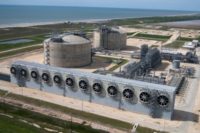On Oct. 13, the National Transportation Safety Board released its preliminary report on the Sept. 9 gas pipeline explosion in San Bruno, Calif., that killed eight people and damaged 55 homes.
The report came a day after Pacific Gas & Electric Co. announced its new natural-gas pipeline safety measures, known as Pipeline 2020.
The explosion of a natural-gas pipeline released 47.6 million standard cubic feet of natural gas, creating a crater 72 ft long by 26 ft wide and throwing a 30-in.-dia, 28-ft segment of the pipe 100 ft.
Investigators are looking at the sequence of events that led up to the explosion and PG&E’s response. Before the accident, PG&E crews were working on an uninterruptible power supply system about 40 miles away when the system malfunctioned. As a result, the regulating valve moved from a partially open to a fully open position, which increased the line’s pressure to 386 pound-force per square in. gauge (psig).
The pipeline’s maximum rated allowable operating pressure was 400 psig, and the specified maximum operating pressure was 375 psig. Within minutes of the fluctuation, the pipeline exploded. Thirty-four minutes later, PG&E dispatched a crew to close the mainline valves.
NTSB investigators took a number of steps in the blast’s immediate aftermath: They shipped the ruptured segment to Washington to X-ray the girth welds and seams, microbiologically tested the pipe surface and performed ultrasonic wall-thickness measurements, magnetic particle inspection of welds and seams, and 3-D laser scans of the pipe pieces. The 50-year-old pipe was 0.375-in. thick, coated with hot applied asphalt and cathodically protected. Technicians still plan to perform hardness and microhardness testing, optical fractographic analysis and electron microscopy of the fracture surfaces. The final report could take a year.
In the meantime, PG&E plans to install hundreds of automatic over-pressure protection control valves and upgrade pipeline infrastructure, particularly in heavily populated areas. The utility also plans to invest $10 million to launch an independent non-profit entity to perform research and development of new inspection technologies. Completing the enhancements could take 10 years, according to Katie Romans, PG&E spokeswoman. “This could help upgrade best practices for the entire state and the country,” Romans said.




Post a comment to this article
Report Abusive Comment